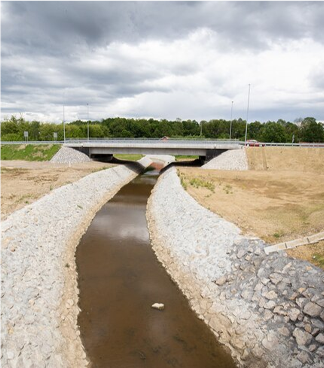Նյմ . 09, 2024 19:56 Back to list
Underwater Pump Motor Innovations for Enhanced Performance and Efficiency in Water Submersion Applications
Understanding Underwater Pump Motors Key Components and Their Importance
Underwater pump motors are essential components in various industrial and agricultural applications, particularly in situations where fluid needs to be moved from subterranean sources. These motors work under specific conditions, making their design and functionality critical to the efficiency and reliability of the pumping systems they serve. This article delves into the aspects of underwater pump motors, their design, applications, and the factors to consider when selecting the right motor for specific needs.
What Are Underwater Pump Motors?
Underwater pump motors are specially designed electric motors that operate while submerged in water or other fluids. They can be found in various settings, from residential wells and irrigation systems to large-scale industrial plants and wastewater treatment facilities. Unlike surface pumps, which use suction to lift water, underwater pumps function by pushing water to the surface using a submersible motor, resting below the liquid level.
Design and Components
The design of underwater pump motors is crucial for their performance and longevity. These motors are hermetically sealed to prevent water infiltration, which can cause short circuits or corrosion of electrical components. Typically, they are constructed from high-quality materials that can withstand the harsh underwater environment, such as stainless steel and thermoplastic materials.
Key components of an underwater pump motor include
1. Stator and Rotor The stator provides a stationary magnetic field, while the rotor, placed within the stator, rotates to generate mechanical energy. This is the core principle behind electromagnetic induction, which powers the pump.
2. Seals and Housings High-quality seals and robust housing materials are essential to prevent water ingress. These components are designed to withstand not only the water pressure but also the corrosive effects of minerals and other substances found in the fluid.
3. Cooling System Since underwater pump motors operate in fluid, they utilize the surrounding liquid for cooling. Unlike surface motors that have air for cooling, proper heat dissipation is vital to prevent overheating and maintain efficient operation.
Applications
underwater pump motor

Underwater pump motors are versatile and can be used in various applications, including
- Water Supply Systems They are commonly found in residential and agricultural wells, providing a reliable water supply for irrigation, livestock, and household use. - Wastewater Treatment In municipal and industrial settings, these motors are used to move wastewater through treatment processes. - Mining Operations They play a critical role in dewatering processes, ensuring that mining operations remain efficient and safe. - Aquaculture In fish farms, underwater pumps are used to circulate and aerate water, supporting aquatic life health.
Factors to Consider When Selecting an Underwater Pump Motor
Choosing the right underwater pump motor involves several considerations, including
1. Power Requirements Assessing the power needed for the specific application is crucial. Motors come in various horsepower ratings, so it’s essential to determine the right size to ensure optimal performance.
2. Depth of Installation The deeper the installation, the higher the pressure the motor must withstand. Selecting a motor rated for the specific depth is necessary to ensure reliable operation.
3. Fluid Characteristics Understanding the properties of the fluid being pumped, such as pH, temperature, and corrosiveness, is crucial in choosing materials and components that can cope with the environment.
4. Efficiency and Energy Consumption Working with energy-efficient motors can significantly reduce operational costs, especially in applications where the pumps run continuously.
5. Maintenance and Serviceability Choosing a motor with accessible parts and a good support network can facilitate easier maintenance and repairs, minimizing downtime and repair costs.
Conclusion
In conclusion, underwater pump motors play a vital role in various sectors by ensuring efficient and reliable fluid transfer. Understanding their design, applications, and the critical factors in selecting the right motor can significantly enhance operational efficiency. As technology advances, we can expect to see even greater innovations in underwater pump motor design, leading to improved performance and reliability in the future.
-
Submersible Water Pump: The Efficient 'Power Pioneer' of the Underwater World
NewsJul.01,2025
-
Submersible Pond Pump: The Hidden Guardian of Water Landscape Ecology
NewsJul.01,2025
-
Stainless Well Pump: A Reliable and Durable Pumping Main Force
NewsJul.01,2025
-
Stainless Steel Submersible Pump: An Efficient and Versatile Tool for Underwater Operations
NewsJul.01,2025
-
Deep Well Submersible Pump: An Efficient 'Sucker' of Groundwater Sources
NewsJul.01,2025
-
Deep Water Well Pump: An Efficient 'Sucker' of Groundwater Sources
NewsJul.01,2025
-
 Submersible Water Pump: The Efficient 'Power Pioneer' of the Underwater WorldIn the field of hydraulic equipment, the Submersible Water Pump has become the core equipment for underwater operations and water resource transportation due to its unique design and excellent performance.Detail
Submersible Water Pump: The Efficient 'Power Pioneer' of the Underwater WorldIn the field of hydraulic equipment, the Submersible Water Pump has become the core equipment for underwater operations and water resource transportation due to its unique design and excellent performance.Detail -
 Submersible Pond Pump: The Hidden Guardian of Water Landscape EcologyIn courtyard landscapes, ecological ponds, and even small-scale water conservancy projects, there is a silent yet indispensable equipment - the Submersible Pond Pump.Detail
Submersible Pond Pump: The Hidden Guardian of Water Landscape EcologyIn courtyard landscapes, ecological ponds, and even small-scale water conservancy projects, there is a silent yet indispensable equipment - the Submersible Pond Pump.Detail -
 Stainless Well Pump: A Reliable and Durable Pumping Main ForceIn the field of water resource transportation, Stainless Well Pump has become the core equipment for various pumping scenarios with its excellent performance and reliable quality.Detail
Stainless Well Pump: A Reliable and Durable Pumping Main ForceIn the field of water resource transportation, Stainless Well Pump has become the core equipment for various pumping scenarios with its excellent performance and reliable quality.Detail
